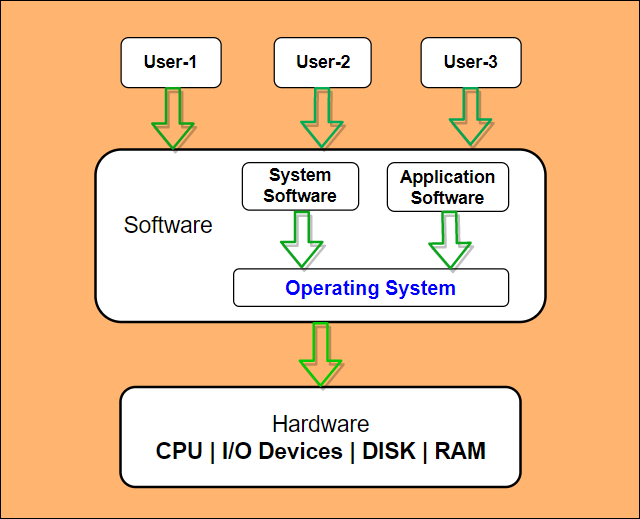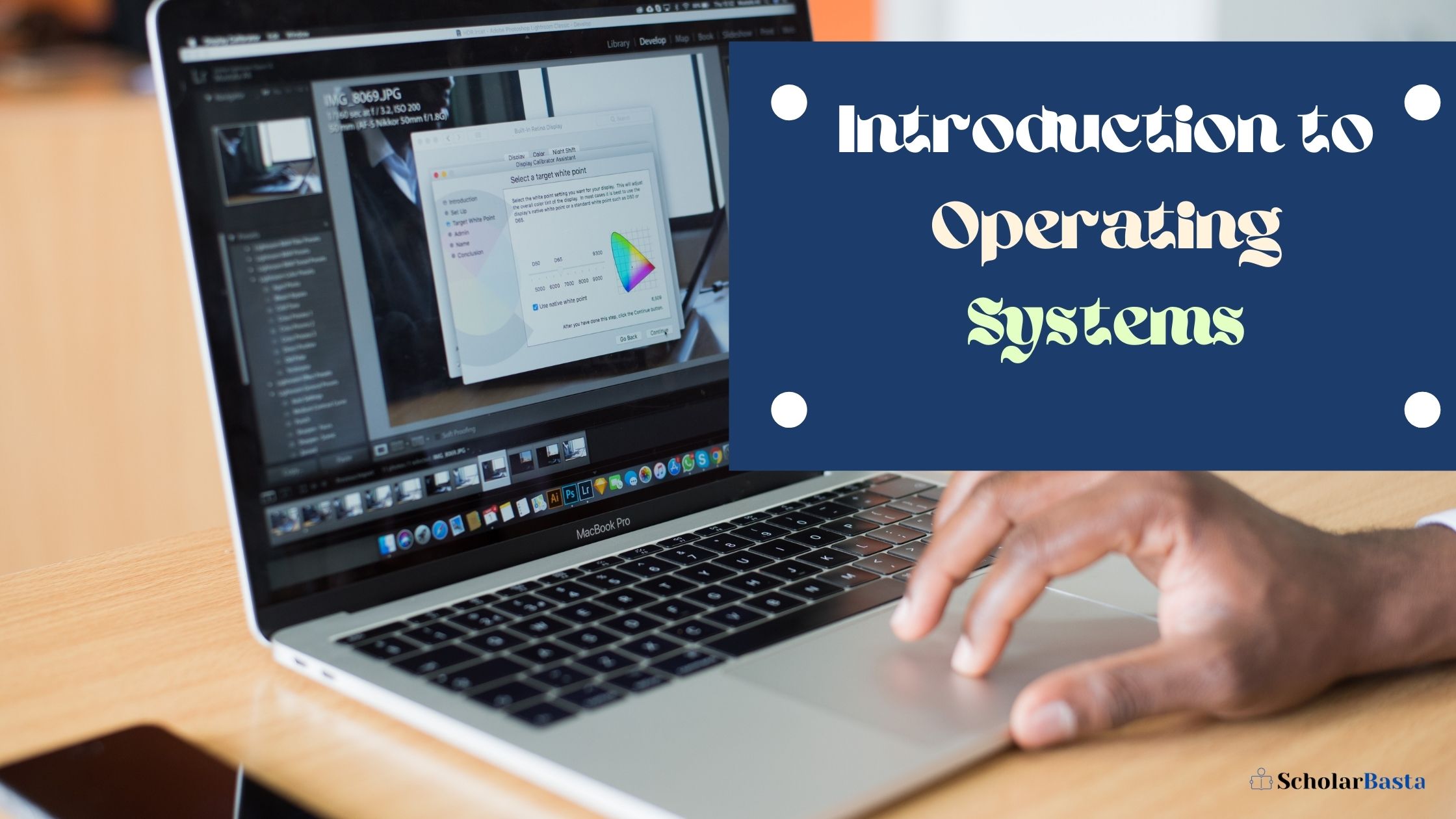An operating system is a type of system software that acts as an interface between different users of a computer and its hardware components.
Some of the very famous examples of Operating Systems include Microsoft Windows, Linux, Apple macOS, Android, Apple’s iOS.
Like a government, an operating system doesn’t perform any useful function by itself rather it creates a conducive environment for other computer programs to run effectively and efficiently.

What are the functions of an operating system?
An operating system performs the following important functions or services:
- Resource Management: In a multi-tasking or multi-user environment CPU cycles, Main memory (RAM), Disk space for storage has to be allocated to the different programs/processes, and OS manages all these resources using schedulers.
- Memory Management: It manages the allocation and deallocation of main memory (RAM) to different programs running on the system. In multiprogramming systems, the OS decides which process or program will get how much main memory (RAM) and when.
- File Management: There are different types of file management systems like NTFS and FAT32. OS provides an interface to the users of the system to create or delete files or directories (Folders). It also manages the different types of permissions like read, write, or execute for operation on the files.
- Input/Output Management: It manages all types of input/output requests made by the application programs by providing access to the required input/output devices.
- Error Detection: An error can occur anywhere and anytime as it may occur in CPU, in I/O devices, or in the memory. OS handles different types of errors that occur during the execution of different processes.
- Security or Privacy: It manages security or privacy by preventing unauthorized access to the data or programs employing passwords and other similar techniques.
Also read Reasons Why Linux Is Getting More Popular In The Past Decade
History of the operating system:
- MS-DOS was one of the first Operating Systems for Personal Computers (PCs) made by Microsoft. There was no mouse to work with it and the user has to remember and type a lot of special computer commands to perform various operations on the computer system.
- It was in the 1980s when operating systems were developed where we could use a mouse to move around and click on the different things on the computer screen instead of typing special computer commands.
- The series of the world’s famous operating system Windows started in the year 1985, Windows 1.0 was released as the first version of the Microsoft Windows line. It has a basic GUI (graphical user interface). It was a 16-bit multi-tasking shell on the top of an existing MS-DOS installation.
Also read Beginner’s approach to Python programming
What are the different types of operating systems?
Following are the important types of operating systems:
- Batch operating system: This is a very basic operating system in which the user doesn’t interact directly with the computer system rather each Batch OS user prepares his/her job or task on an offline device like punch cards and gives it to the computer operator. Then the operator segregates the different tasks/jobs, groups the similar tasks/jobs into batches, and runs them in groups to speed up the processing of these jobs/tasks.
- Time-sharing operating system: This is another type of operating system that uses the concept of **time-sharing. Time-sharing is a technique in which all the processes get an equal share of the processor’s time to reduce the response time for each user task/program.
- Distributed operating System: This type of operating system is used to manage the system’s set-up at different physical locations. This operating system uses different communication lines like buses to coordinate and communicate with the systems at different physical locations.
- Clustered operating system: This type of operating system is used to manage a set of systems clustered in some local environment.
- Network operating system: This type of operating system is used to manage a network of computers. This OS runs on the system that is used as a server and provides it the ability to manage different networking functions. The main purpose of a networking operating system is to manage the different types of file and device access to the other systems in the network (LAN or any Private network).
- Real-Time operating system: This is a type of operating system which minimizes the **response time. The response time is the time required by the system to produce an output after processing the user’s input.
All the things we have discussed so far provide you the basic knowledge of the operating system and its various functions and types.

